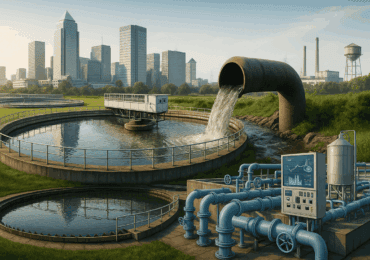
Water has always shaped civilization, but only in the past century have we begun shaping water. From the earliest wells to today’s smart purification plants, the story of water treatment is one of adapting to pressure, responding to crises, and ultimately building smarter systems that protect health, industry, and the planet.
In 2025, water treatment is no longer a back-end utility, it’s a frontline solution to climate risk, industrial responsibility, and sustainable development.
Clean Water: Once a Luxury, now a Global Expectation
A few generations ago, millions around the world still consumed untreated water from wells, rivers, and rain catchments. The dangers were known, cholera, typhoid, dysentery—but the solutions were localized and inconsistent.
What changed? Urbanization. The rise of cities, dense populations, and modern healthcare made access to safe water not just a health matter, but a social contract. Municipal filtration systems, chlorination, and basic infrastructure became essential public services. Yet even these systems, while revolutionary, were reactive designed to treat visible pollution and stop disease outbreaks after they occurred.
A Turning Point: Water Meets Industry and Environment
The 20th century’s industrial boom introduced a new problem: chemical pollution. Factories and mines discharged untreated waste into rivers. Stormwater runoff from growing cities carried oil, heavy metals, and toxins downstream. Slowly, the global conversation shifted from drinking water alone to environmental water management.
By the 1970s and 80s, countries began passing stricter wastewater laws. Treatment plants added biological systems to remove nutrients and metals. Industries were forced to pre-treat their water. And the notion of ecological impact entered the regulatory playbook.
This era marked the beginning of water treatment as both an engineering discipline and an ethical responsibility.
Today’s Challenge: Doing More with Every Drop
Fast forward to 2025. Climate uncertainty, water scarcity, and rising energy costs are putting water at the center of every sustainability plan. Cities need to reuse what they’ve already cleaned. Industries must account for every gallon they discharge. Agricultural zones must irrigate more land with less input.
And thus, modern water treatment is no longer about disposal, it’s about optimization.
Plants are now designed to recover not only clean water, but also energy, phosphorus, and other resources. Decentralized treatment hubs are appearing in remote and rural regions. Sensors and AI guide real-time adjustments, making treatment faster, more precise, and less wasteful.
Water is no longer a passive input, it’s a managed, measured asset.
High-Stakes Sector: Mining and Water Stewardship
Perhaps no industry has undergone a bigger water transformation than mining. Historically seen as one of the worst water polluters, the mining sector has had to rapidly reinvent how it uses and treats water.
Today’s mines implement closed-loop systems that treat and recirculate process water multiple times. Technologies such as reverse osmosis, advanced oxidation, and passive bio-filtration help remove the heavy metals, acids, and sediment that once polluted nearby water bodies.
In many jurisdictions, water discharge is no longer allowed companies must reuse or reinject their water safely. What was once a regulatory burden has become a reputational and operational strategy. Modern mining understands that water stewardship is no longer optional, it’s integral to long-term viability and community trust. TerraMines is a mining services company specializing in the treatment of water associated with mining activities and offers cutting-edge expertise and tailor-made solutions to the complex challenges of water management in the mining sector.
The Next Leap: Designing Circular Water Futures
The evolution of water treatment is heading in one clear direction: circularity. This concept challenges the old model of extract-use-dispose and replaces it with one that mimics nature—use, clean, return, repeat.
What’s making this possible?
- Modular systems that can scale up or down, depending on need
- AI-driven operations that predict equipment failures and water demand
- Natural systems like wetlands, algae bioreactors, and green roofs that reduce treatment loads
- Hybrid public-private projects that bring innovation to municipal infrastructure
These tools are helping cities, industries, and even small communities build self-sufficient, low-waste water systems that adapt to changing weather, population, and energy constraints.